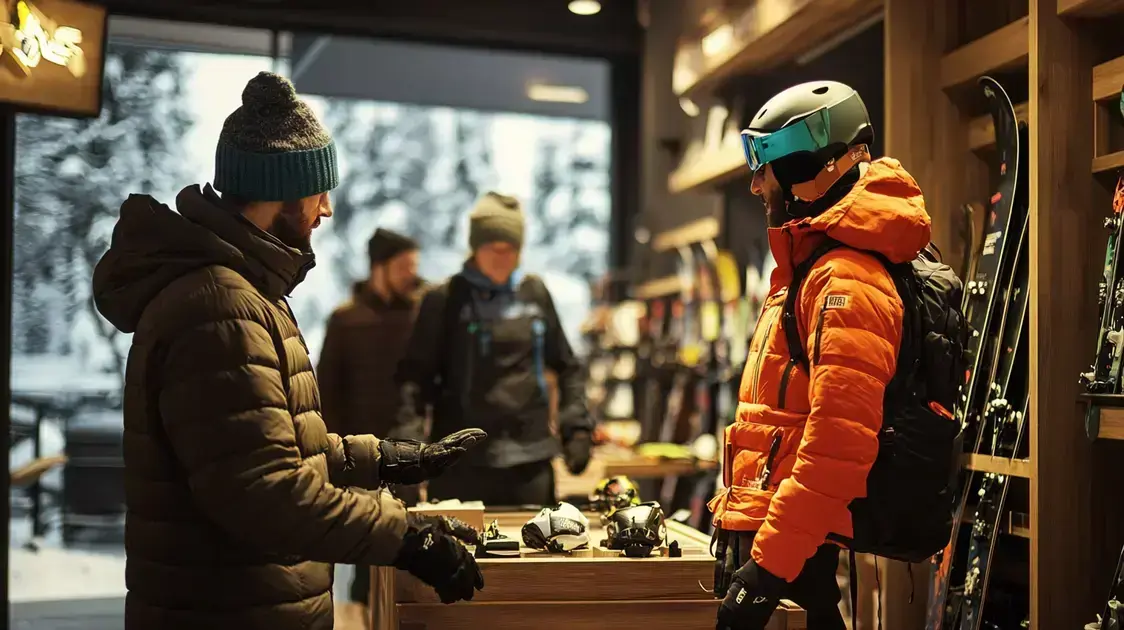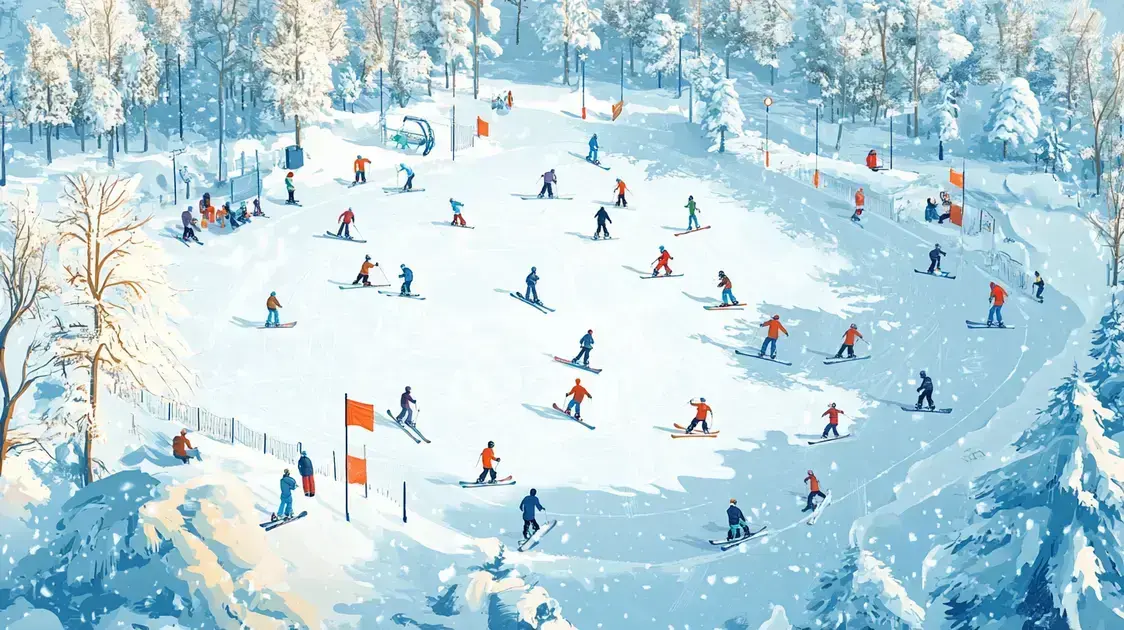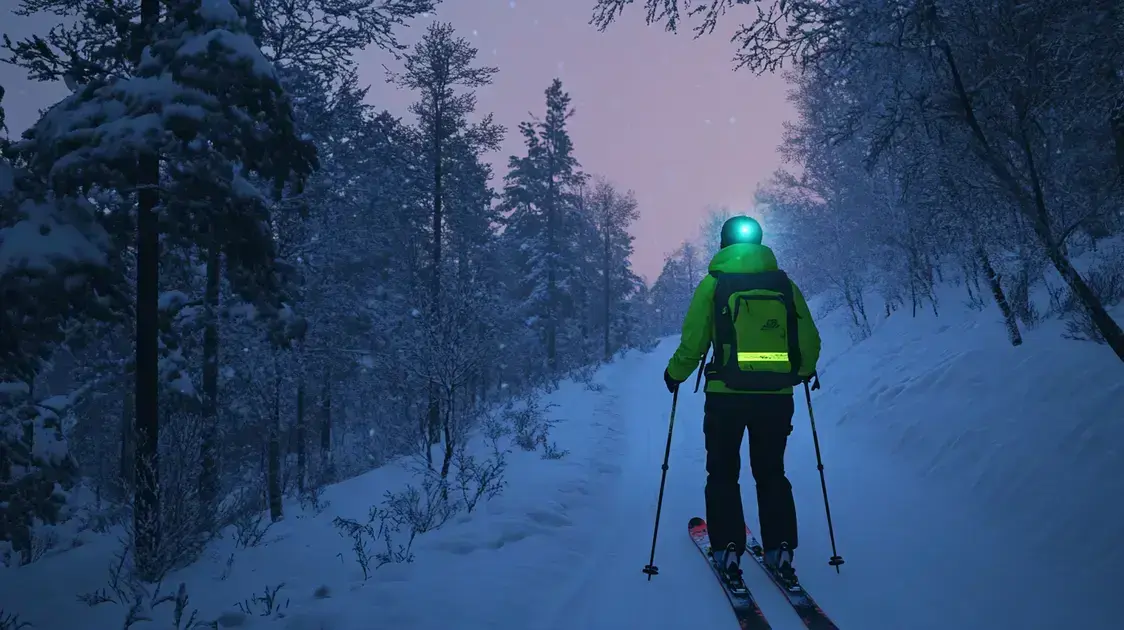Best Tips for Winter Sports Safety should always be a priority before hitting the slopes or the ice. While winter sports are thrilling, they also come with risks that can lead to serious injuries if not properly managed.
Unpredictable weather, icy surfaces, and high speeds can quickly turn an exciting adventure into a dangerous situation. Whether you’re skiing, snowboarding, or ice skating, taking the right safety measures helps you stay in control and avoid accidents.
Want to make the most of your winter sports without unnecessary risks? Keep reading to discover essential safety strategies that will help you stay protected while fully enjoying the season.
Why Winter Sports Safety Matters
Winter sports provide thrilling adventures, but they also come with inherent risks. Understanding why Best Tips for Winter Sports Safety matters is crucial for avoiding accidents and injuries.
Proper safety measures ensure that you can fully enjoy activities like skiing, snowboarding, and ice skating without unnecessary hazards.
One key reason for prioritizing safety is the unpredictable nature of winter conditions. Slippery surfaces, low visibility, and sudden weather changes can increase the likelihood of accidents.
Additionally, injuries such as sprains, fractures, and concussions are common in these sports, making preparedness vital.
The Importance of Following Safety Protocols
Adhering to safety protocols minimizes the likelihood of accidents. Wearing appropriate gear, like helmets and goggles, protects your body from impact and cold-weather challenges. Furthermore, staying informed about weather forecasts and terrain conditions can significantly reduce risks.
Another important factor is ensuring your physical readiness. Engaging in proper conditioning and warming up before activities keeps your muscles flexible and prevents strains. Ignoring these steps could lead to long-term consequences or hinder your ability to participate altogether.
When safety is taken seriously, winter sports become a more enjoyable and less stressful experience. By following Best Tips for Winter Sports Safety, you can embrace the excitement of these activities while keeping yourself and others secure.
Essential Gear for Staying Safe
Having the essential gear for staying safe is critical when participating in winter sports. Proper gear not only enhances performance but also reduces the risk of injury, allowing you to enjoy your activity without unnecessary concerns.
Following Best Tips for Winter Sports Safety ensures that you are well-prepared for any challenges that may arise.
Protective Equipment
Helmets are non-negotiable for winter sports like skiing and snowboarding, protecting your head from potential impacts. Goggles are indispensable as well, shielding your eyes from snow glare and harsh winds while enhancing visibility. Similarly, gloves with excellent grip and insulation prevent frostbite and ensure better control during your activities.
Insulating Layers
Dressing in layers is crucial to combat extreme cold. Begin with moisture-wicking base layers to keep sweat away, followed by insulating mid-layers like fleece. Top it with a waterproof and windproof outer shell jacket and pants to protect against snow and wind exposure.
Footwear and Traction
High-quality, insulated boots that fit securely are vital for maintaining warmth and stability. For icy conditions, traction devices like crampons or snow grips can add extra safety by preventing slips and falls.
Other vital gear includes a properly fitted backpack to carry essentials like snacks, water bottles, and a small first aid kit. These minor additions can make a significant difference when unexpected situations arise.
By investing in the right safety gear and following Best Tips for Winter Sports Safety, your winter sports adventures will remain enjoyable and secure.
Choosing the Right Winter Sports Equipment

When it comes to winter sports, choosing the right equipment is essential for both performance and safety. The appropriate gear reduces the risk of injury, enhances your experience, and ensures you are well-prepared for varying conditions.
Following Best Tips for Winter Sports Safety helps you make the best choices for your gear.
Skis, Snowboards, and Ice Skates
Make sure your skis or snowboard align with your skill level and the type of terrain you plan to tackle. Beginners should opt for shorter skis or boards, as they offer more control. For ice skating, ensure skates fit snugly and provide ample ankle support to prevent injuries during movement.
Poles, Bindings, and Boots
For skiing, selecting poles of the correct height is critical to maintaining balance. Bindings must also be properly fitted to prevent accidental releases during movement. Quality boots for skiing, snowboarding, or other sports should offer a secure fit and insulation to keep your feet comfortable and warm.
Specialized Add-ons
Consider using specialized add-ons or accessories like wrist guards for snowboarders or shin guards for ice skaters to enhance safety. Additionally, using adjustable gear provides a better fit and longer durability, especially helpful for growing children.
Renting gear can be a smart option for occasional participants to try different types of equipment before purchasing. Whether renting or buying, consulting with an expert can ensure you select accurate, sport-specific items suitable for your needs.
By following Best Tips for Winter Sports Safety and choosing the right equipment, you set yourself up for safe and enjoyable winter sports activities.
Weather Awareness Tips for Winter Sports
Monitoring the weather is vital for safe and enjoyable winter sports activities. Sudden changes in conditions can impact visibility, terrain, and overall safety, making weather awareness tips essential for anyone heading outdoors.
Check Forecasts Frequently
Before heading out, check detailed weather forecasts for your destination. Platforms that provide real-time updates on snow conditions, wind speed, and temperature changes can help you prepare better. Keep monitoring the weather throughout the day using mobile apps or alerts.
Plan for Temperature Changes
Layer your clothing to adapt to fluctuating temperatures. Hypothermia and frostbite are real risks, especially if exposed to cold winds for extended periods. Carry extra layers in case the conditions become colder than expected.
Recognize Warning Signs
Storm clouds, heavy fog, or an increase in wind speed are signs you may need to pause or adjust your activities. Poor visibility from fog or heavy snow can make slopes or ice fields more dangerous, increasing the chance of accidents.
Avoid areas prone to avalanches if engaging in activities like skiing or snowboarding. Use avalanche safety tools like beacons or transceivers and stick to marked trails. For icy conditions, ensure traction aids are part of your preparation. Being aware of the weather protects more than just your adventure – it ensures your safety and comfort throughout the experience.
Techniques to Avoid Common Injuries
Preventing injuries during winter sports involves practicing proper techniques to ensure both safety and enjoyment. Awareness and preparation can dramatically reduce common injuries like sprains, fractures, and muscle strains by following Best Tips for Winter Sports Safety.
Warm-Up Exercises
Perform dynamic stretches and warm-up exercises before hitting the slopes or ice. Activities like jogging in place or arm rotations increase blood flow, loosen up muscles, and prepare your body for physical activity.
Maintain Proper Form
Adopting the correct posture for your specific sport is crucial. For skiing, bend your knees slightly to absorb shocks and maintain stability. For skating, ensure your knees are bent and your center of gravity is low to maintain balance and prevent falls.
Learn Proper Falls
In activities like snowboarding or ice skating, learning how to fall properly can prevent severe injuries. For instance, if you feel you’re losing balance, avoid falling on your hands to prevent wrist injuries. Instead, try to land on your side while tucking in your arms to protect sensitive joints.
Stay within your skill level and avoid pushing your limits on challenging terrains or in extreme weather. Gradually progress and practice, especially for advanced tricks or steep slopes – doing so will make your experience safer and more enjoyable by minimizing injury risks.
By following Best Tips for Winter Sports Safety, you can reduce your risk of injuries and fully enjoy your winter sports activities.
Safety Rules for Popular Winter Sports

Following safety rules for popular winter sports ensures a secure and enjoyable experience while reducing the chances of injuries. Whether you’re skating, skiing, or snowboarding, abiding by these key guidelines is crucial.
For Skiing and Snowboarding
Always stick to marked trails and follow posted signs. These paths are designed with safety in mind and help you avoid avalanche-prone areas. Stay in control by maintaining a speed suitable for your skill level, and be mindful of others sharing the slopes.
For Ice Skating
Check the condition of the ice before skating. If you’re skating outdoors, ensure the ice is thick and stable enough to support your activity. Wear well-fitted skates, and avoid abrupt stops or risky movements that could cause falls. Always skate counterclockwise unless otherwise directed in a rink for safety.
For Sledding and Tubing
Choose designated sledding areas free of obstacles like trees or fences. Sled facing forward to lower the risk of head injuries and crashes. Helmets are highly recommended, especially for children.
Always be aware of your surroundings and yield to other participants when necessary. Using proper gear and paying attention to weather and terrain conditions ensures you follow safety protocols effectively, no matter which winter sport you’re engaging in. These practices enable everyone to enjoy their adventure responsibly.
How to Prepare Your Body for Winter Sports
Preparing your body for winter sports is essential to ensure a safe and enjoyable experience. Building strength, flexibility, and endurance can enhance performance and reduce the risk of injuries.
Strength Training
Incorporate exercises that target key muscle groups like your legs, core, and lower back. Squats and lunges improve leg strength, which is crucial for skiing and snowboarding. Core exercises such as planks help in maintaining balance and stability on uneven terrain.
Cardio for Endurance
Increasing your cardiovascular endurance allows you to keep up with longer and more intense activities. Activities like running, cycling, or stair climbing replicate the effort needed in winter sports and improve your overall stamina.
Flexibility and Stretching
Dynamic stretching routines prepare your body for the movements required in winter sports. Focus on areas like hamstrings, quads, and shoulders to improve flexibility and range of motion. Yoga or pilates can also help in building both strength and flexibility.
Mix in sport-specific drills to mimic movements like skating strides or ski turns. These functional exercises not only train your muscles but also improve coordination and muscle memory. Taking these steps ensures your body is ready to tackle the physical demands of winter sports safely.
The Role of First Aid in Winter Sports
First aid plays a critical role in winter sports safety, helping to address injuries promptly and minimize potential complications. Having a basic understanding of first aid ensures that you or others can respond effectively in emergencies.
Essential First Aid Skills
Learning how to treat common injuries like sprains, cuts, and bruises is vital. For example, knowing how to apply a compression wrap can reduce swelling from a sprain. Understanding how to clean and cover minor wounds prevents infections that could worsen later.
Dealing with Severe Conditions
In extreme weather, conditions like frostbite and hypothermia can occur. Recognizing the early symptoms—such as numbness, shivering, or discolored skin—allows you to take immediate action, like warming the affected area or seeking shelter.
Carry a First Aid Kit
Always bring a portable first aid kit equipped with items like bandages, antiseptic wipes, pain relievers, and emergency blankets. These tools are especially useful for remote locations where professional medical help might not be immediately available.
Additionally, many winter sports environments offer first aid stations or patrollers. Familiarize yourself with their locations to quickly get professional help if needed. By prioritizing first aid knowledge and preparation, winter sports participants can handle injuries with confidence and prevent them from escalating.
Tips for Staying Visible During Winter Activities

Staying visible during winter activities is essential to avoid accidents and ensure the safety of everyone on the slopes or trails. Snowy and low-light conditions often reduce visibility, making extra precautions necessary. Following Best Tips for Winter Sports Safety can help you stay safe and seen.
Wear Bright or Reflective Clothing
Choose clothing in bright colors like neon orange, green, or yellow. Reflective jackets, vests, or patches amplify your visibility in low-light or foggy conditions, ensuring others can see you from a distance.
Use LED Lights or Wearable Flashlights
Attach small LED lights to your helmet, jacket, or equipment for additional visibility. Wearable flashlights or headlamps are especially effective for evening or nighttime activities and provide added illumination for navigation.
Stick to Well-Lit and Marked Areas
Engage in activities in areas with proper lighting or marked trails. Avoid dark or heavily wooded zones where visibility is further compromised. Flare markers or reflective trail signs can also guide you safely.
Communicate with other participants using hand signals or whistles to signal your location. These precautions improve safety for everyone involved, particularly in sports like skiing, snowboarding, or cross-country trekking.
By following Best Tips for Winter Sports Safety, proper visibility measures make winter adventures safer and more enjoyable.
Best Tips for Winter Sports Safety: Final Considerations
Winter sports offer excitement and countless memories, but safety must always come first. By focusing on essential gear, selecting proper equipment, and practicing techniques to avoid injuries, you’re setting yourself up for success.
Understanding weather conditions, following safety rules, and preparing your body through physical conditioning make all the difference in enjoying these activities responsibly. Additionally, being visible and equipped with basic first aid skills ensures you’re ready for unexpected situations.
Whether skiing, snowboarding, or ice skating, applying these tips enables you to enjoy the beauty and thrill of winter sports while keeping security at the forefront. Embrace the adventure with confidence and prioritize safety every step of the way.

